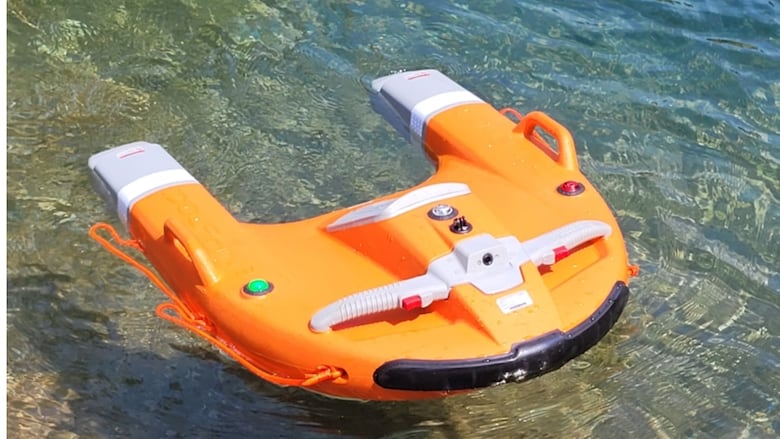Walton Shore fire department adds rescue device to contend with challenging tides
Remote-controlled vehicle will help department reach stranded people, chief says

The Walton Shore Volunteer Fire Department has acquired a remote-controlled vehicle to upgrade its water rescue capabilities.
The Dolphin 3 Pro remote rescue buoy, believed to be the first of its kind in Atlantic Canada, offers a new option for saving lives in the challenging tidal conditions of the Minas Basin.
Fire Chief Danny Patterson said the $17,000 device arrived four weeks ago. He said Deputy Chief Barb Taylor identified the need following a difficult call last summer.
"We ran into two people that were stranded offshore and caught in the tides and we couldn't get to them because the tides were too low to get a boat in the water," Patterson said.
The bright orange buoy can travel at 25 km/h across water and support up to 190 kilograms, he said.
It has two jet pumps that allow it to operate in shallow water, making it especially useful on tidal flats.
"The thing is practically unsinkable," Patterson said.
Training underway
The department has been training with the device since putting it into service last week. It hasn't yet been needed for a rescue.
Keith Rhyno, the local municipal councillor and a volunteer firefighter with another department, said he's proud that the Walton Shore department is leading the way in water rescue capability.
"They have a lot of fortitude," he said. "They're not scared to explore things such as that."
Patterson said they're still evaluating the device's full potential.
While the initial cost, including international shipping and brokerage fees, was significant for the small volunteer department, Patterson said the device's potential makes it worth it.
"If we can bring one person into shore, then it paid for itself," he said.